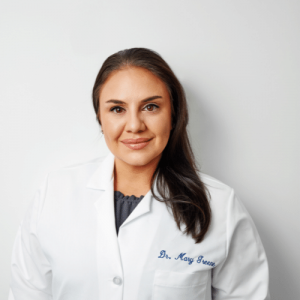Cardiologist Dr. Mary Greene with Manhattan Cardiology has the important details about acting FAST to a stroke.
— Dr. Mary Greene
NEW YORK, NY, UNITED STATES, October 11, 2023 /EINPresswire.com/ — Strokes are serious medical emergencies, and the most important factor for surviving and recovering from a stroke is the timeliness of treatment. It’s a condition wherein seconds and minutes truly matter. For this reason, it’s extremely important for everyone—not just medical professionals—to know how to identify the early signs and symptoms of a stroke. Dr. Mary Greene, cardiologist and Director of Women’s Health at Manhattan Cardiology and contributor to www.labfinder.com, has all the details.
“There are two main types of stroke. Ischemic strokes are caused by blood flow obstructions, such as blood clots. Hemorrhagic strokes are caused by ruptured blood vessels that leak blood into the brain. In both cases, the brain’s supply of blood is disrupted, and the cells within the brain are quickly starved of oxygen. This can lead to permanent brain damage or even be fatal,” said Dr. Greene.
Anyone can have a stroke, but some things increase the likeliness that someone will suffer one. Some of the primary risk factors of stroke include:
• smoking
• heavy alcohol use
• high blood pressure
• high cholesterol
• heart disease
• diabetes
• obesity
• sickle cell disease
• previous history of stroke
• family history of stroke
Some other special considerations include age, sex, and race or ethnicity. After the age of 55, the chance of having a stroke doubles every decade. Strokes are more common in women, and the risk of stroke can be increased during pregnancy or while taking birth control pills. The risk of having a stroke is higher for Blacks, and the risk of death from a stroke is higher for non-Hispanic Blacks and Pacific Islanders.
“But it’s also possible for someone without any of these risk factors to have a stroke, so knowing the signs is important for everyone. It’s easiest to remember the acronym ‘FAST,’” said Dr. Greene.
F is for Face
The brain is divided into two halves called hemispheres, and generally speaking each hemisphere controls the movements of one half of the body. Depending on where in the brain a stroke occurs, it can often cause motor control issues for one half of the body. One common sign of this is a droopiness one side of the face.
“It’s a very simple test. If someone is suspected of having a stroke, ask them to smile. If they’re having a stroke, one half of the smile will often droop and sag, and the corner of the mouth won’t really rise. And frequently the person having the stroke won’t be aware of this,” said Dr. Greene.
A is for Arms
“Another simple test is to ask someone to raise their arms up in the air. If they’re having a stroke, they may find it difficult or impossible to hold up one of their arms, and it will noticeably drift downward,” said Dr. Greene.
Sometimes the person will not even be able to lift their arm above their own head to begin with.
S is for Speech
Speech can be affected in many ways during a stroke. A person might suddenly lose the ability to speak. Other times, they might be able to form words, but the words are nonsensical or completely random. And for others, they might retain the ability to speak, but it suddenly becomes slurred.
“To check someone’s speech, ask them to recite a simple phrase. It should be something that they would normally have no trouble saying, such as their name, home address, and phone number. If it sounds markedly off, or if they can’t speak at all, they might be having a stroke,” said Dr. Greene.
T is for Time
The last step in the test is perhaps the most crucial: act immediately.
“Based on the previous three tests, if a person seems like they might be having a stroke the most important thing to do is call 911 right away,” said Dr. Greene.
A person who might be having a stroke should never drive themselves to the emergency room. Another responsible adult can drive them, but an ambulance is usually the best option.
“And if you ask someone to do the smile test and they seem like they’re having a stroke, just jump straight to 911. You don’t have to display facial, arm, and speech symptoms all together in order to be having a stroke,” Dr. Greene added.
It’s also important to note that in some cases the symptoms might appear for a few minutes and then go away. This could be a sign of a transient ischemic attack (TIA), also sometimes called a mini-stroke. A TIA is just as serious a medical emergency as a stroke. If someone displays symptoms of a stroke, call 911, even if the symptoms appear to go away.
“Getting medical attention quickly can be the difference between a full recovery and permanent disability or even death, so don’t take any chances. If someone might be having a stroke, remember to always act FAST,” said Dr. Greene.
Manhattan Cardiology is the premier facility for cardiac testing and preventive treatment in
New York. www.manhattancardiology.com
Dr. Mary Greene is a cardiologist and Director of Women’s Health at Manhattan Cardiology who emphasizes individualized treatment and preventative medicine. https://manhattancardiology.com/team/mary-greene-md/
Contact: www.mcprpublicrelations.com
Melissa Chefec
MCPR, LLC
+ +1 203-968-6625
[email protected]
![]()
Originally published at https://www.einpresswire.com/article/660960274/signs-of-a-stroke-and-why-immediate-response-is-necessary
The post Signs of a Stroke and Why Immediate Response is Necessary first appeared on Beauty Ring Magazine.
Beauty - Beauty Ring Magazine originally published at Beauty - Beauty Ring Magazine




